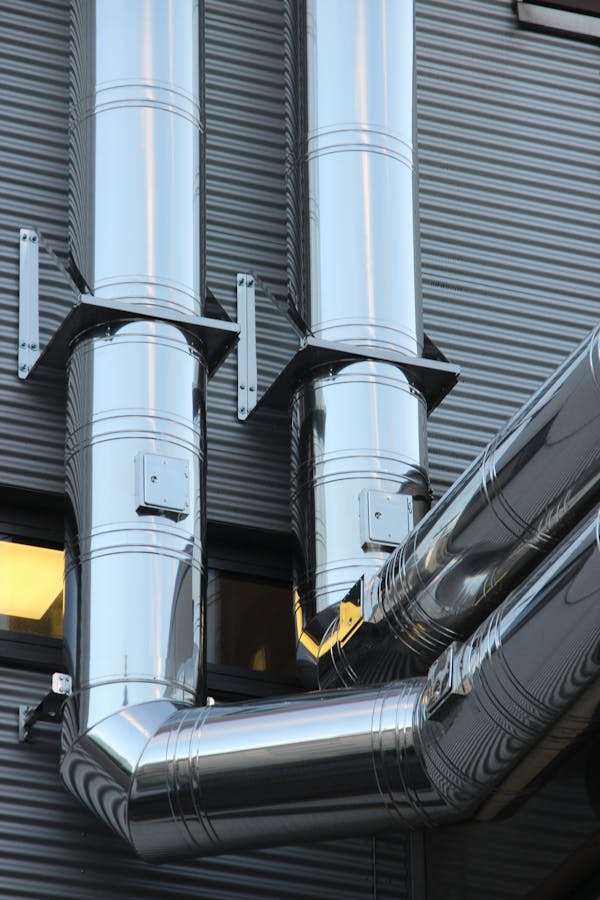As the energy landscape transforms, innovations in oil pipeline solutions stand at the forefront of this evolution. These advancements address critical logistical challenges, enhance safety protocols, and mitigate environmental impacts, shaping the future of energy transport. Explore the latest technologies and practices that are revolutionizing the efficiency and sustainability of pipeline systems, ensuring they meet the demands of a dynamic global market.
Current Innovations in Oil Pipeline Solutions
Recent advancements in oil pipeline technology highlight significant progress in safety, efficiency, and environmental stewardship. For those considering the strategic decision to invest in oil pipeline, state-of-the-art solutions promise improved operational outcomes.
Also to read : Essential tactics for uk hospitality firms to master customer review management
Enhanced Monitoring and Leak Detection Systems
Modern oil pipeline operations rely heavily on advanced monitoring tools designed to detect leaks and irregularities with unparalleled precision. These systems leverage technologies such as fiber optics, real-time analytics, and ultrasonic sensing to identify potential issues before they escalate. Notably, pipeline leak detection systems are now capable of pinpointing leaks smaller than 1% of the pipeline’s flow, minimizing environmental impacts and reducing operational downtime.
Emergency Response Plans and Reinforced Compliance
Effective emergency response plans are a cornerstone of contemporary pipeline management. These plans combine robust training, drills, and cutting-edge technology to reduce reaction times in addressing accidents or environmental hazards. Simultaneously, adherence to stringent compliance standards ensures pipelines meet international and local safety regulations, ultimately safeguarding public health and ecosystems.
Also read : Essential strategies for uk startups to attract venture capital investment
Innovations in Pipeline Materials and Construction
Developments in pipeline construction materials now include external coatings and cathodic protection to combat corrosion, extending pipeline lifespans. Additionally, more sustainable practices, such as reducing the carbon footprints of pipeline installations, are becoming integral to the sector’s future.
Environmental Considerations in Oil Pipeline Operations
Environmental Risks and Mitigation Strategies
Oil pipelines pose significant challenges to ecosystems, primarily through risks of leaks and spills. These incidents can lead to contamination of water resources, damage to biodiversity, and soil degradation. Advanced pipeline leak detection systems have become critical, relying on technologies like acoustic sensors and real-time monitoring to minimize these environmental threats. Additionally, selecting durable materials during oil pipeline construction helps in mitigating corrosion and reducing long-term environmental risks.
Community Engagement and Impact Assessments
The impact of oil pipelines on local communities must not be underestimated, as construction and operations can disrupt daily life, affect local economies, and raise health concerns. Companies increasingly implement community engagement programs to address concerns and involve residents in oil pipeline risks assessments. Transparent communication and social impact assessments are now integral to pipeline projects to balance economic benefits and societal well-being.
Sustainable Practices in Operation and Maintenance
Adopting sustainable practices in pipeline industries is essential to reduce the oil pipeline carbon footprint. Techniques like efficient routing, regular maintenance, and integrating renewable energy into pipeline operations exemplify efforts toward sustainability. Furthermore, decommissioning older pipelines responsibly can prevent further environmental harm, showcasing the industry’s push toward greener futures.
Economic and Geopolitical Implications of Oil Pipelines
Economic Contributions of Oil Pipeline Projects
Oil pipelines play a pivotal role in bolstering economies by facilitating the efficient transfer of oil and petroleum products. Their lower transportation costs—estimated at about $5 per barrel—make them a preferred choice over rail or road. Oil pipeline economics highlight how these infrastructures significantly reduce energy distribution expenses while ensuring reliable supply chains. Major oil pipeline projects, such as the UK’s United Kingdom Oil Pipelines (UKOP), help connect vital refineries to end markets, promoting regional trade and industrial growth.
Furthermore, pipelines contribute to job creation, both during their construction and throughout their long-term maintenance. Ownership structures, often including joint ventures, allow multiple stakeholders, such as Shell and BP in UKOP’s case, to share risks and reap financial rewards. This collaborative model underpins the success of countless pipeline ventures globally.
Geopolitical Tensions Surrounding Major Pipeline Routes
The geopolitical implications of oil pipelines are profound, as these infrastructures frequently intersect with critical international borders. Transboundary routes can lead to disputes over ownership, tariffs, and environmental responsibilities. Pipeline networks in regions like the Middle East or Eastern Europe often escalate geopolitical tensions, with nations vying for control over strategic transit routes. These conflicts underscore the necessity for robust pipeline financing options and governance agreements.
Financing and Investment Structures in Pipeline Development
The viability of oil pipeline projects hinges on innovative oil pipeline financing options. Public-private partnerships commonly fund such ventures, distributing financial risks among investors. Sovereign wealth funds and banks also play crucial roles in lending. Trust in the profitability of oil pipelines—bolstered by consistent demand for fossil fuels—ensures continued global infrastructure investment.
Historical Context and Future Trends in Oil Pipelines
Historical Milestones in Pipeline Development
The oil transportation network has its origins in the mid-19th century, with the first crude oil pipeline constructed in Pennsylvania during the 1860s. These early systems marked a pivotal shift in the logistics of petroleum movement, offering an efficient alternative to rail and barge transport. In the UK, the government-led GPSS network, initially built between 1941 and 1944, expanded significantly in the following decades, playing a critical role in fueling national infrastructure. Another landmark was the 1959 Shell-Mex and BP pipeline connecting Walton on Thames to Heathrow, signaling the rising demand for oil pipeline infrastructure in aviation support. Globally, the “Big Inch” and “Little Big Inch” pipelines during World War II showcased the strategic advantage pipelines offered under geopolitical pressures.
Current Trends Influencing Pipeline Infrastructure Growth
In recent years, pipeline monitoring technology and safety regulations have evolved alongside demand. The integration of pipeline leak detection systems has mitigated environmental risks, which remain a pressing concern due to the environmental impact of oil pipelines. Additionally, there is growing emphasis on regional initiatives, as exemplified by UK’s UKOP system, which provides critical links between refineries and major markets. These advancements ensure sustainability and efficiency amid rising energy needs.
Future Innovations and Regulatory Changes in the Pipeline Industry
Emerging digital innovations, such as oil pipeline digitalization efforts, are expected to revolutionize how pipelines are monitored and managed. Enhanced safety frameworks coupled with sustainable practices in pipeline industries aim to reduce the carbon footprint of pipeline operations. Furthermore, regional oil pipeline initiatives remain pivotal, with nations leveraging infrastructure to address both geopolitical challenges and domestic energy policies. As oil transportation methods evolve, the push for cleaner, more efficient alternatives will shape the future of the industry.











